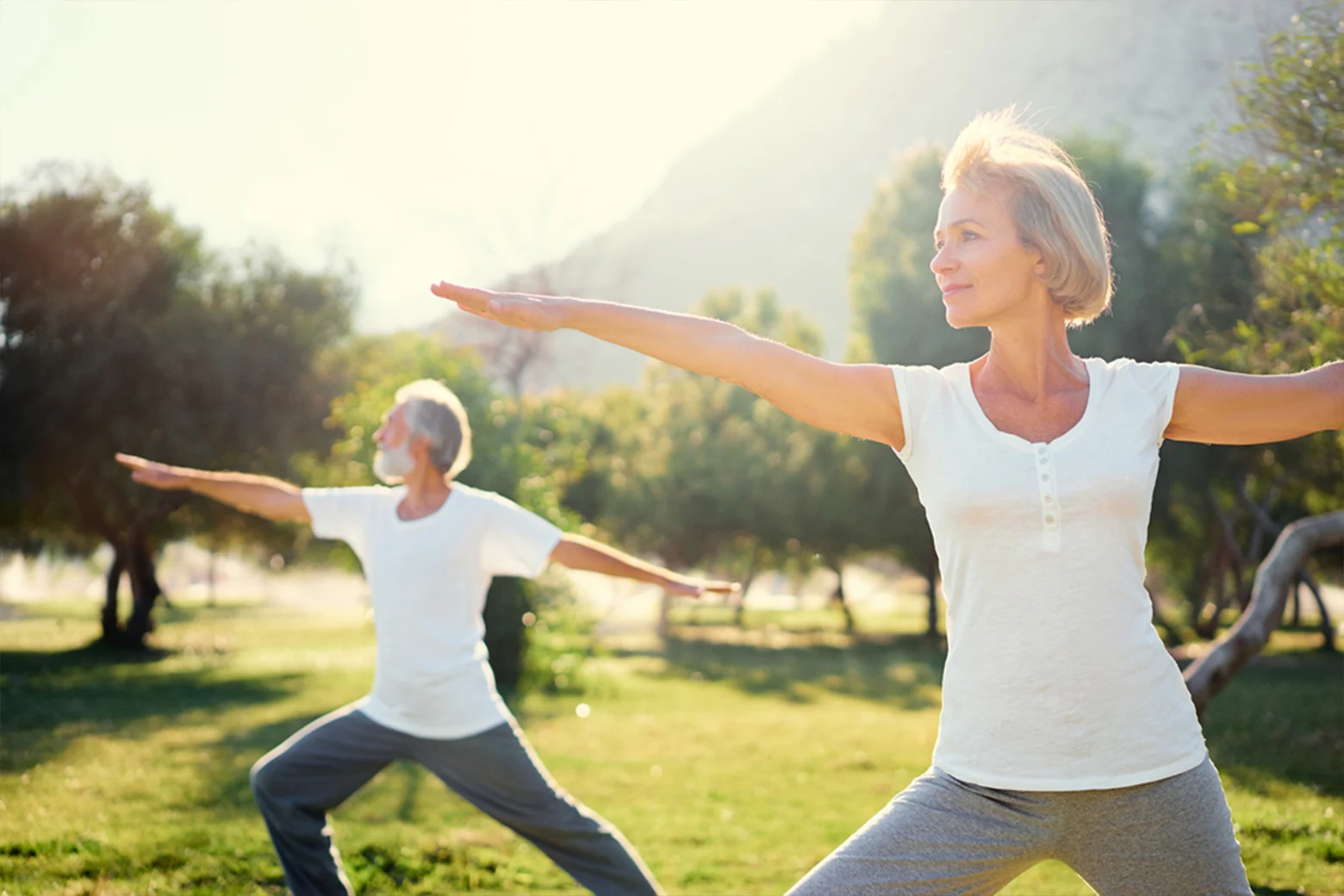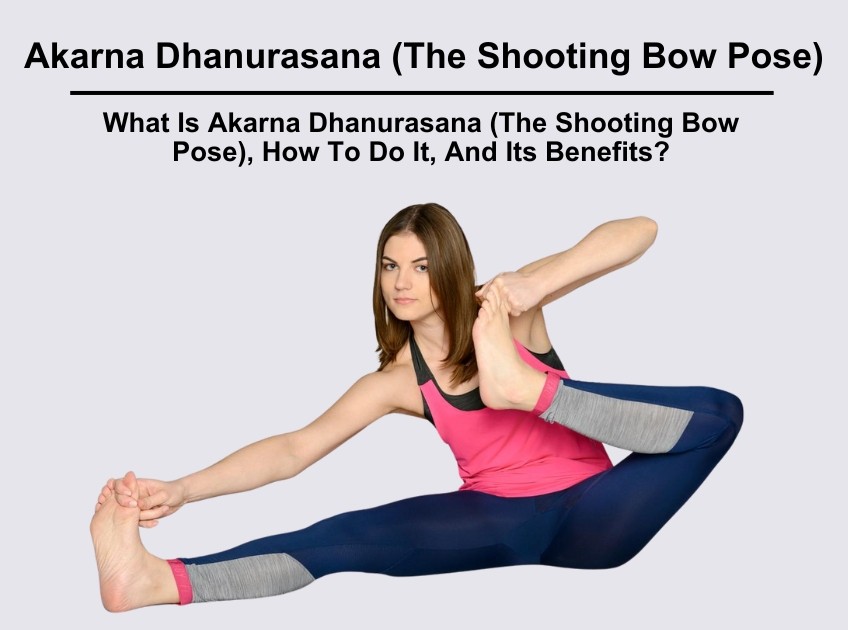
Akarna Dhanurasana, also known as the Shooting Bow Pose or Bow and Arrow Pose, is an advanced-level yoga pose that offers a multitude of benefits. Derived from the Sanskrit language, where "Karna" means "Ear," "Dhanura" means "Bow," and "Asana" means "Pose," this asana involves pulling your legs towards the ear, resembling an archer drawing an arrow from a bow.
Akarna Dhanurasana holds deep spiritual significance, symbolizing the balance between mind and body. Regular practice of this pose strengthens leg muscles, improves flexibility, and enhances concentration and focus power. It is a complete yoga asana that promotes physical well-being as well as spiritual growth.
Akarna Dhanurasana is an advanced-level yoga pose that involves pulling your legs towards the ear, resembling an archer drawing an arrow from a bow.
It is also known as the Shooting Bow Pose or Bow and Arrow Pose.
Akarna Dhanurasana strengthens leg muscles, improves flexibility, and enhances concentration and focus power.
Regular practice of Akarna Dhanurasana offers a wide range of benefits for physical, mental, and spiritual growth.
It is important to approach the pose with caution and seek guidance from a qualified yoga teacher.
_1707293304.png)
Akarna Dhanurasana is a Shooting Bow Pose or Bow-and-Arrow Pose yoga asana that involves drawing one foot closer to the ear while keeping the other leg extended on the ground. The pose gets its name from Sanskrit, where "Karna" means "Ear," "Dhanura" means "Bow," and "Asana" means "Pose."
The pose resembles an archer drawing an arrow from a bow, symbolizing focus, precision, and clarity of intent. Just as an archer aims at a target, the practitioner of Akarna Dhanurasana directs their attention and energy towards finding spiritual balance.
Akarna Dhanurasana is often practiced in conjunction with the chanting of the sacred sound "Om," which helps deepen the meditative state and enhance the overall experience of the pose.
Akarna Dhanurasana, also known as the Shooting Bow Pose, is an advanced-level yoga pose that requires focus, balance, and flexibility. Here are step-by-step instructions on how to perform this pose:
Start by sitting in the Staff pose, with your legs extended forward and spine straight.
Hold the big toes of both feet with your hands such that your right hand touch the left toe while your left hand touch the right toe.
Lift one foot off the ground and slowly bring it towards your ear, keeping the elbow and knee straight.
Simultaneously, draw the corresponding arm back from the shoulder, mimicking the movement of an archer pulling a bowstring.
Maintain the grip on the other foot
Hold the pose for 15-20 seconds, while breathing normally or chanting "OM".
Repeat the same sequence on the other side, lifting the other foot towards the opposite ear.
It is important to note that Akarna Dhanurasana requires a high level of flexibility and strength. Beginners can use a yoga strap or a chair for support, gradually working towards performing the pose without any props.
Before attempting Akarna Dhanurasana, it is important to prepare your body with some other yoga poses. These preparatory poses help warm up the body, stretch the muscles, and improve flexibility for a safer and more effective practice of Akarna Dhanurasana.
Here are some recommended preparatory poses:
Reclining Hand-to-Big-Toe Pose: This pose stretches the hamstrings and prepares the legs for the intense flexibility required in Akarna Dhanurasana.
Garland Pose (Malasana): This pose opens up the hips and stretches the lower back, preparing the body for the deep backbend of Akarna Dhanurasana.
Half Boat Pose (Ardha Navasana): This pose strengthens the core muscles and improves balance, which are essential for maintaining stability in Akarna Dhanurasana.
Bound Angle Pose (Baddha Konasana): This pose opens up the hips and stretches the inner thighs, helping to increase flexibility in the legs for Akarna Dhanurasana.
Boat Pose (Navasana): This pose strengthens the core muscles and improves overall stability and balance, aiding in the execution of Akarna Dhanurasana.
By incorporating these preparatory poses into your yoga practice, you can ensure a smooth and effective transition into Akarna Dhanurasana, reaping its full benefits while reducing the risk of injury.
| Preparatory Poses | Description |
|---|---|
| Reclining Hand-to-Big-Toe Pose | Stretches hamstrings; prepares the legs for flexibility |
| Garland Pose (Malasana) | Opens up the hips; stretches the lower back |
| Half Boat Pose (Ardha Navasana) | Strengthens the core muscles; improves balance |
| Bound Angle Pose (Baddha Konasana) | Opens up the hips; stretches the inner thighs |
| Boat Pose (Navasana) | Strengthens the core muscles; improves stability |
While Akarna Dhanurasana is a challenging pose, there are several variations and modifications that can be explored to suit different levels of flexibility and strength. These variations allow practitioners to adapt the pose according to their needs and abilities, while still reaping the benefits of this powerful asana.
This variation of Akarna Dhanurasana involves performing the pose while standing upright instead of sitting. Start by standing with your feet hip-width apart. Lift one leg and bring it towards your ear, maintaining a straight line from the hip to the foot. Use your hand to hold the foot in place, if needed. This standing variation challenges balance and strengthens the leg muscles.
Baddha Akarna Dhanurasana is a variation that involves binding the hands around the raised foot. Start in a seated position with both legs extended forward. Bend one leg and bring the foot towards your ear, while wrapping your hands around the foot from behind. Maintain a straight spine and hold the pose for a few breaths. This variation intensifies the stretch in the hamstrings and deepens the hip opening.
In Akarna Dhanurasana II, the extended leg remains elevated throughout the pose. Begin by sitting with both legs extended forward. Bend one leg and bring the foot towards your ear, similar to the traditional pose. However, instead of placing the foot on the ground, keep it lifted off the floor throughout the pose. This modification increases the challenge for the core muscles and requires greater balance and stability.
If you're looking for additional support or are working towards the full expression of Akarna Dhanurasana, props can be used to assist and enhance the pose. A chair can be used to provide stability and support while practicing the pose. Place one foot on the chair and bring it towards your ear, maintaining proper alignment and engaging the muscles. A yoga strap can also be utilized by looping it around the foot and holding the strap instead of the foot. This modification allows for a deeper stretch and greater accessibility for those with limited flexibility.
Another modification involves using a pillar or wall for support. Stand beside a pillar or wall and place your hand on it while performing Akarna Dhanurasana. This modification offers stability and helps maintain proper alignment and balance.
Consulting a yoga expert or attending yoga classes can provide valuable guidance and insight into the variations and modifications that are most suitable for your practice. These modifications ensure a safe and effective experience while still reaping the benefits of Akarna Dhanurasana.
Regular practice of Akarna Dhanurasana, also known as the Shooting Bow Pose, offers a wide range of benefits for your physical and mental well-being. Let's explore the positive effects this pose can have on your body and mind.
Strengthens leg muscles: Akarna Dhanurasana requires you to engage and strengthen the muscles in your legs, including the quadriceps and hamstrings. This can improve stability and balance in your lower body.
Improves blood flow: The deep stretching and bending involved in Akarna Dhanurasana stimulates blood circulation throughout your body, promoting oxygen and nutrient delivery to your muscles and organs.
Tones abdominal muscles: As you draw your legs towards your ear in this pose, you engage your core muscles, including the abdominal muscles. Regular practice can help tone and strengthen these muscles, enhancing your overall core stability.
Enhances spine and hip flexibility: Akarna Dhanurasana involves a deep forward bend, which stretches and lengthens the muscles along your spine and hips. Over time, this can lead to improved flexibility and range of motion in these areas.
Improves heart efficiency: The combination of deep breathing and the physical exertion involved in Akarna Dhanurasana can increase your heart rate, improving cardiovascular health and efficiency.
Boosts immunity: The stretching and twisting actions in Akarna Dhanurasana stimulate the lymphatic system, which plays a crucial role in immune function. Regular practice can help promote better immune response and overall health.
Stimulates Kundalini energy: Akarna Dhanurasana is believed to activate the Kundalini energy, which is said to reside at the base of the spine. This can create a sense of spiritual awakening and inner vitality.
Improves concentration and focus power: The focused attention required to maintain the Shooting Bow Pose can enhance mental clarity, concentration, and the ability to stay present in the moment.
Akarna Dhanurasana offers these benefits and more, making it a valuable addition to your yoga practice. Remember to practice mindfully, listen to your body, and seek guidance from a qualified yoga teacher to ensure safe and effective execution of the pose.
While Akarna Dhanurasana offers numerous benefits, it is important to be aware of the contraindications associated with this pose. Certain individuals should avoid practicing Akarna Dhanurasana to prevent any potential risks or complications.
Pregnancy: Pregnant women should refrain from performing Akarna Dhanurasana, as it involves intense stretching and compression of the abdominal area, which may cause discomfort or strain on the pelvic region.
Shoulder or hamstring injuries: Individuals with existing shoulder or hamstring injuries should avoid this pose, as it requires significant strength and flexibility in these areas.
Lower back problems: Those with lower back issues, such as herniated disks or chronic pain, should refrain from practicing Akarna Dhanurasana, as the pose involves deep backbending and could exacerbate their condition.
Recent surgeries: If you have undergone any recent surgeries in the shoulder, arms, spine, or hips, it is recommended to avoid this pose until fully healed and cleared by your healthcare professional.
If you have any concerns or pre-existing health conditions, it's crucial to consult a qualified yoga teacher or healthcare provider before attempting Akarna Dhanurasana. They can provide personalized guidance and modifications to ensure a safe and appropriate practice.
Akarna Dhanurasana, also known as the Shooting Bow Pose, is not only a physically challenging yoga asana but also an ancient practice with deep-rooted significance. Here are some interesting facts about Akarna Dhanurasana:
Akarna Dhanurasana has been mentioned in ancient yogic texts like the Hath Yoga Pradipika and Gheranda Samhita, making it a time-honored practice passed down through generations.
Akarna Dhanurasana is considered a complete yoga asana as it engages multiple muscle groups and promotes overall body strength and flexibility.
Regular practice of Akarna Dhanurasana helps strengthen the back muscles, which is essential for maintaining good posture and spinal health.
This pose stimulates the abdominal organs, improving digestion and relieving digestive issues such as bloating and constipation.
Akarna Dhanurasana stretches the front part of the body, including the chest, abdomen, and hip flexors, promoting greater flexibility and releasing tension.
Practicing Akarna Dhanurasana with awareness and focus can awaken the spiritual level, enhancing mindfulness, and promoting a deeper connection with oneself.
Expert Tips for Practicing Akarna Dhanurasana
When practicing Akarna Dhanurasana, it is important to follow these tips for a safe and effective practice:
Start Slowly and begin with gentle warm-up exercises to prepare your body for the pose. Gradually increase the intensity and duration of the pose as your flexibility improves.
Maintain Proper Alignment and focus on spine straight, shoulders relaxed, and core engaged. This will help prevent any strain or injury.
Activate your core muscles to stabilize your body in the pose. This will help you maintain balance and control throughout the practice.
Deep conscious breathing is essential during Akarna Dhanurasana. This will enhance the relaxation and benefits of the pose.
Pay attention to any discomfort or pain during the practice. If a particular variation or pose modification doesn't feel right, modify or skip it.
Consistency is key in yoga. Set aside dedicated time for your Akarna Dhanurasana practice to experience the full benefits of the pose. Aim to practice at least three times a week for optimal results.
To enhance the practice of Akarna Dhanurasana, incorporating complementary asanas can further improve flexibility, strength, and overall well-being. Here are some asanas that can be performed alongside Akarna Dhanurasana:
Virasana (Hero Pose): This pose helps in opening up the hips, stretching the thighs, and promoting proper posture.
Bhujangasana (Cobra Pose): Cobra Pose strengthens the back muscles, improves spinal flexibility, and stimulates abdominal organs.
Urdhva Mukha Svanasana (Upward-Facing Dog Pose): This pose stretches the chest, shoulders, and abdomen, while also strengthening the upper body.
Setu Bandha Sarvangasana (Bridge Pose): Bridge Pose strengthens the legs, opens the chest and shoulders, and stimulates the thyroid gland.
Ardha Matsyendrasana (Half Lord of the Fishes Pose): This asana stimulates the digestive system, stretches the spine, and improves spinal flexibility and mobility.
Incorporating these asanas in a guided sequence, under the supervision of a trained yoga teacher, can complement the benefits of Akarna Dhanurasana and contribute to a well-rounded practice.
Also Read: Anulom Vilom Pranayama instructions, benefits, steps and caution
Akarna Dhanurasana, also known as the Shooting Bow Pose or Bow and Arrow Pose, is a challenging yoga asana that offers a multitude of benefits. Regularly practicing Akarna Dhanurasana can strengthen your muscles, improve flexibility, enhance concentration, and promote overall strong body.
However, it is crucial to approach this pose with caution and listen to your body. Seek guidance from a qualified yoga teacher to ensure proper alignment and technique. With consistent practice and patience, Akarna Dhanurasana can become an integral part of your yoga routine, contributing to a healthier and more balanced lifestyle.
Whether you're a beginner or an experienced yogi, Akarna Dhanurasana has the potential to bring about positive transformations in your physical and mental well-being. Take the time to explore this beautiful pose and discover the profound benefits it can offer.
If you're new to yoga and want to start practicing yoga in an organised way to learning the correct techniques for yoga asanas, our Yoga for Beginners course is the ideal choice for you.
Explore our 100-hour Yoga Teacher Training course, offered by one of the best training facilities in Rishikesh, perfect for those interested in deepening their practice and teaching skills.
Explore the world of healing and meditation through our exceptional Sound Healing course in Rishikesh.Designed for people who are passionate about learning and engaging with these activities that change lives

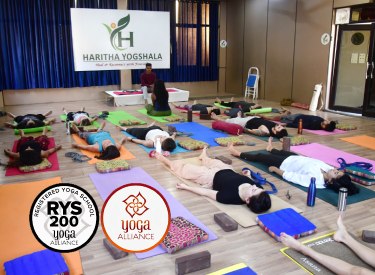
Haritha offers 100, 200, 300 hours yoga teacher training in Rishikesh
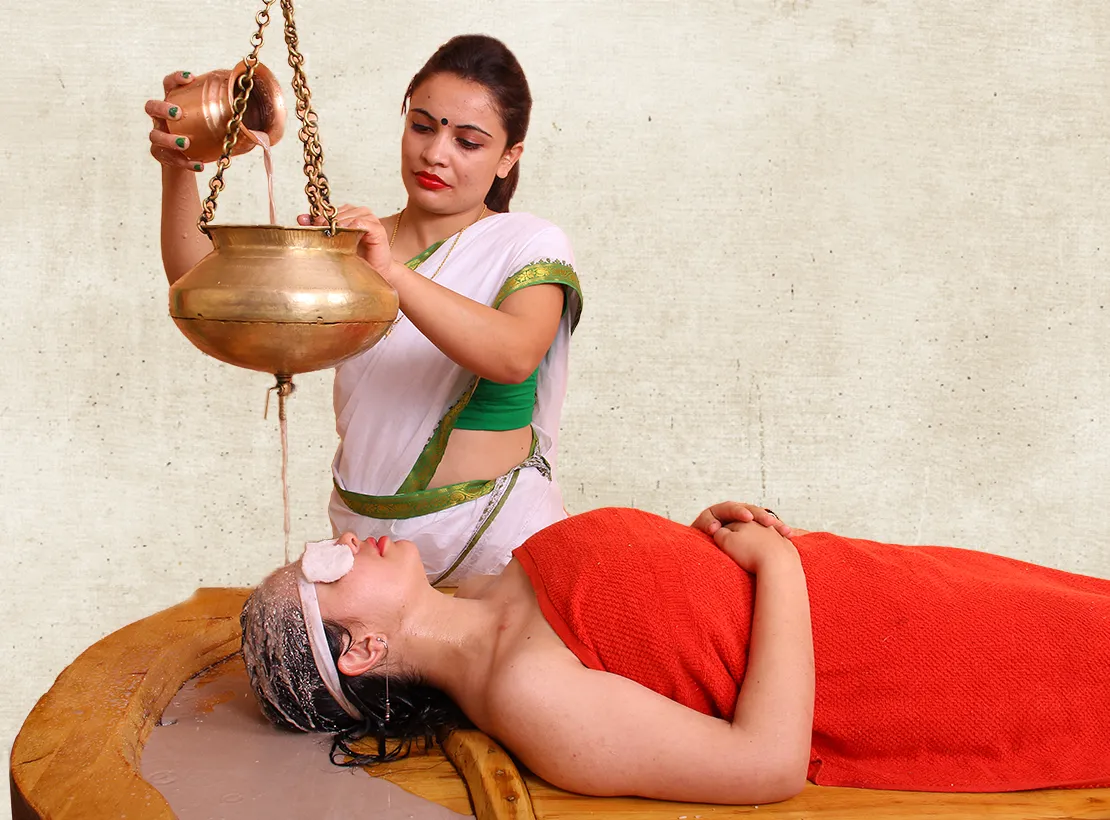
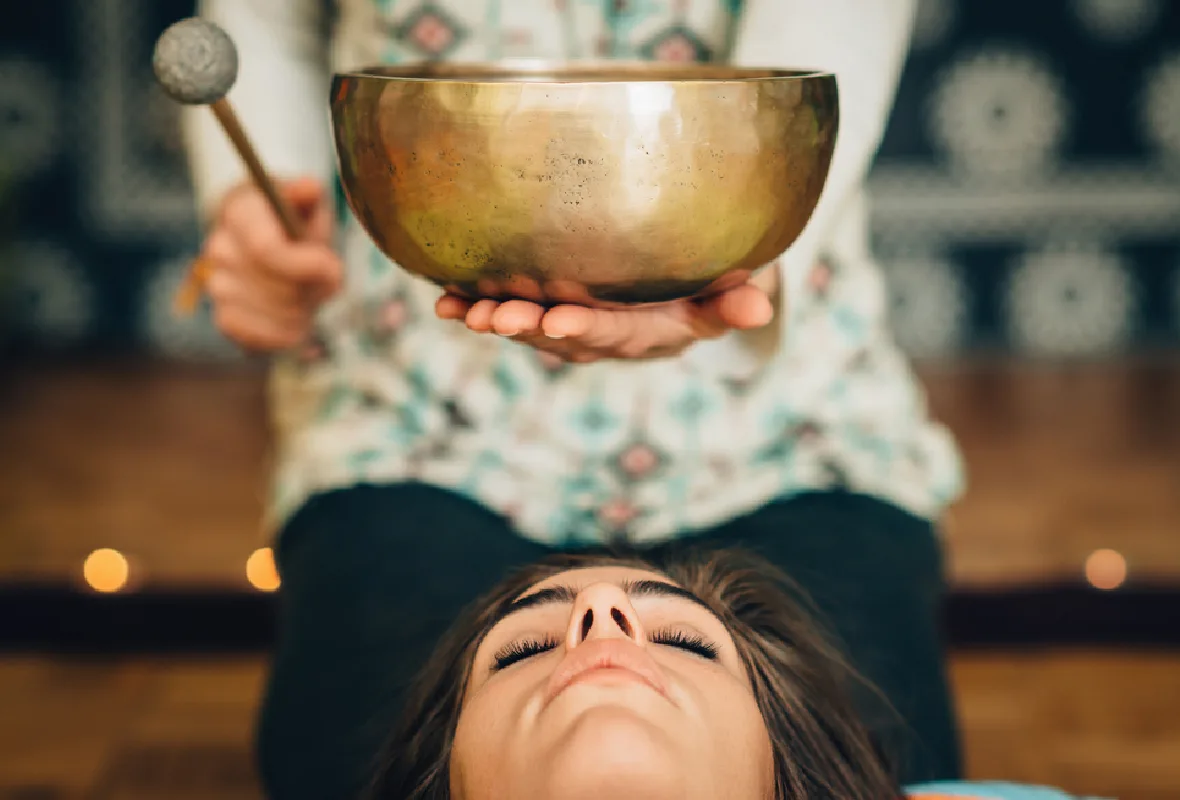
Know about Haritha healing and meditation courses and therapies
